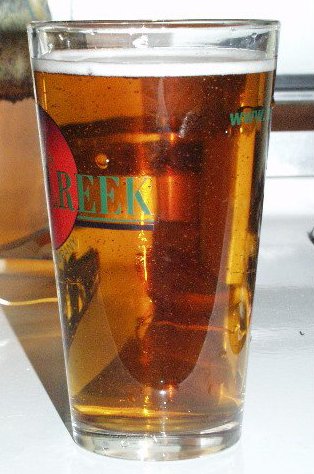Bonneville
Well-Known Member
I've been extract brewing for a while now (4 kits, 7 recipes) and am not in a hurry to jump into AG due to constraints (space, time, etc). What I am interested in is improving my beer which has generally been good and occasionally better-than-good. The two major points I've seen on here are:
Any others? I'm planning a porter this weekend. The process was as follows when I brewed this before.
So, how can we improve the process? How do I convert the LME called for in the recipe to DME? When should extract be added and how much (some at 60 min and some later)? How about the maltodextrin (added for more body)?
My primary objection to my homebrews is lack of hop character, so the late extract method is appealing to me to improve utilization. I've never noticed the 'twangy' LME taste, but maybe I'll notice it once its gone.
Other suggestions welcome. If you need more details on the recipe, let me know... but I'm mainly interested in the process. Besides, the recipe usually changes on the fly when I realize the home brew store is out of what I needed and the substitutions begin....
- DME better than LME
- Late extract additions for better hop utilization in partial boils
Any others? I'm planning a porter this weekend. The process was as follows when I brewed this before.
- Steep specialty grains at 155F for 45 minutes in 2.5 gallons
- Remove grain bag
- Bring to boil
- 60 min - Add 6.6lbs Light Malt LME, 1lb Light DME, 8oz maltodextrin, and 1oz bittering hops (11% alpha)
- 30 Min - Add 1 oz flavor hops (8.9%)
- 3 Min - Add 1 oz aroma hops (4.3%)
- Cool wort, add 2.5 gallons of water, pitch yeast, wait....
So, how can we improve the process? How do I convert the LME called for in the recipe to DME? When should extract be added and how much (some at 60 min and some later)? How about the maltodextrin (added for more body)?
My primary objection to my homebrews is lack of hop character, so the late extract method is appealing to me to improve utilization. I've never noticed the 'twangy' LME taste, but maybe I'll notice it once its gone.
Other suggestions welcome. If you need more details on the recipe, let me know... but I'm mainly interested in the process. Besides, the recipe usually changes on the fly when I realize the home brew store is out of what I needed and the substitutions begin....









